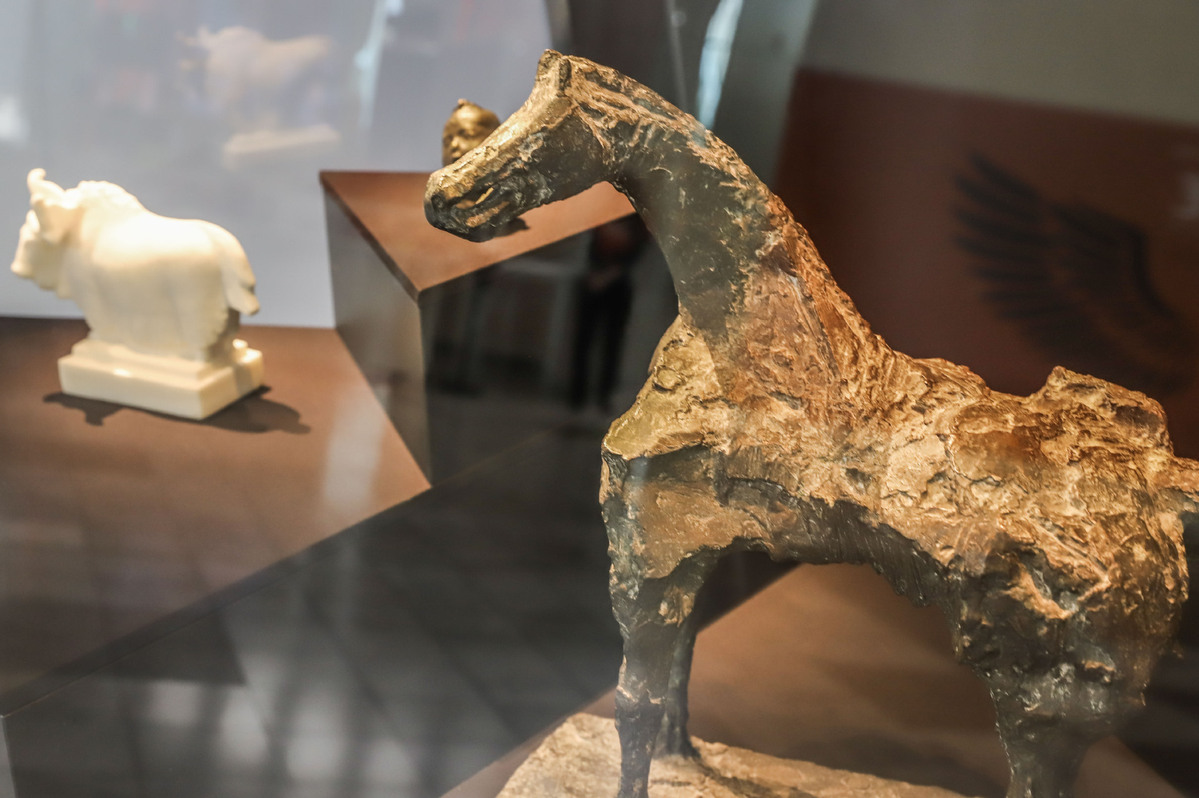

"My sculpture Sleeping Child captures the innocence and happiness of childhood -- a moment when a child is asleep that reflects the charm of naivety." The award-winning Sleeping Child of cast copper depicts a sleeping boy with his mouth slightly open and his head tilted sideways. "We are lucky to see the exhibition here, which showcases the historical inheritance of Chinese art exchange with the West," said Song Yanqun, minister-counselor for culture at the Chinese Embassy in Australia.
He said that the three works reflected different aspects of Chinese national spirit: yak for fortitude, horse for diligence and child for harmony. "They could help visitors deepen their understanding in Chinese art and culture," he said. "They are products of Chinese culture influenced by the Western culture, products of cultural exchanges themselves."
The event follows an exhibition by the NMA, the Red Heart of Australia, which had been shown at NAMOC. In fact, both institutions have hosted exchanges since 2010. They recently signed a new memorandum of understanding to renew the cultural partnership.
Wang Xining, Chargé d'Affaires of the Chinese Embassy in Australia, noted that the three sculptures came to Canberra before Chinese visitors when Australian national border opens to China. "So this is a token that art can serve as the vanguard of friendship and people-to-people exchange," he said. "It shows the common aspiration of Australian and Chinese artists and people for more exchanges and deepened understanding."